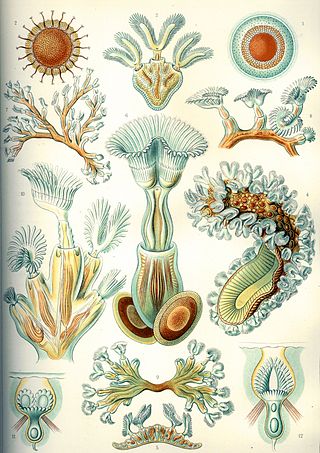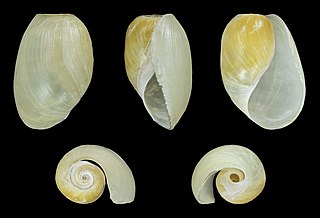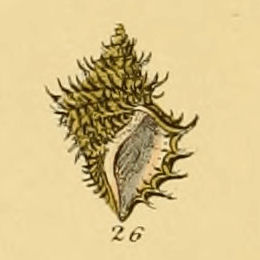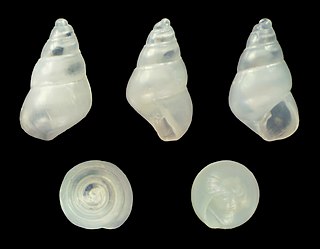History of the series
On 11 March 1943, at a meeting of The Linnean Society in Burlington House, TH Savoy presented his "Synopsis of the Opiliones" (Harvestmen). It was so well received that a decision was made there and then to publish it as the first of a series of "ecological fauna lists".
Re-launched by Dr Doris Kermack in the mid-1960s, the New Series of Synopses of the British Fauna went from strength to strength. From number 13, the series had been jointly sponsored by The Estuarine and Coastal Sciences Association and Dr RSK Barnes became co-editor.
From 1993, the series has been published by The Field Studies Council and benefits from association with the extensive testing undertaken as part of the AIDGAP project.

Bryozoa are a phylum of simple, aquatic invertebrate animals, nearly all living in sedentary colonies. Typically about 0.5 millimetres long, they have a special feeding structure called a lophophore, a "crown" of tentacles used for filter feeding. Most marine bryozoans live in tropical waters, but a few are found in oceanic trenches and polar waters. The bryozoans are classified as the marine bryozoans (Stenolaemata), freshwater bryozoans (Phylactolaemata), and mostly-marine bryozoans (Gymnolaemata), a few members of which prefer brackish water. 5,869 living species are known. At least two genera are solitary ; the rest are colonial.

Siphonostomatoida is an order of copepods, containing around 75% of all the copepods that parasitise fishes. Their success has been linked to their possession of siphon-like mandibles and of a "frontal filament" to aid attachment to their hosts. Most are marine, but a few live in fresh water. There are 40 recognised families:

Iphinoe trispinosa is a species of cumacean belonging to the family Bodotriidae and the genus Iphinoe.

Jorunna tomentosa is a species of sea slug, a dorid nudibranch, a shell-less marine gastropod mollusc in the family Discodorididae.

Facelina auriculata, sometimes known by the common name Slim Aesop, is a species of sea slug, an aeolid nudibranch in the family Facelinidae.

Akera bullata, named the royal flush sea slug, is a species of sea snail, a marine opisthobranch gastropod mollusk in the family Akeridae, a family that is related to the sea hares. This species is the only European representative of the genus Akera.

Sorgenfreispira brachystoma is a species of sea snail, a marine gastropod mollusk in the family Mangeliidae.

Bela nebula, also known as the nebular needle conch is a species of sea snail, a marine gastropod mollusk in the family Mangeliidae. It is the type species of the genus Bela.

Testudinalia testudinalis, common name the common tortoise limpet, is a species of sea snail, a true limpet, a marine gastropod mollusk in the family Lottiidae, one of the families of true limpets. It is commonly known as the plant limpet or tortoiseshell limpet.

Tritia varicosa is a species of sea snail, a marine gastropod mollusk in the family Nassariidae, the nassa mud snails or dog whelks.

Ariadnaria borealis, common name the boreal hairysnail, is a species of small sea snail, a marine gastropod mollusk in the family Capulidae, the cap snails.

Euspira fusca, common name the dark necklace shell, is a species of predatory sea snail, a marine gastropod mollusk in the family Naticidae, the moon snails.

Brachystomia eulimoides is a species of sea snail, a marine gastropod mollusc in the family Pyramidellidae, the pyrams and their allies.
Odostomia plicata is a species of sea snail, a marine gastropod mollusc in the family Pyramidellidae, the pyrams and their allies.

Odostomia turrita is a species of sea snail, a marine gastropod mollusc in the family Pyramidellidae, the pyrams and their allies.

Ondina diaphana is a species of sea snail, a marine gastropod mollusk in the family Pyramidellidae, the pyrams and their allies.

Nerilla antennata is 1–2 mm colourless meiofaunal polychaete. It is often found in aquaculture.

Goniodoris nodosa is a species of sea slug, a dorid nudibranch, a marine gastropod mollusc in the family Goniodorididae.

Conopea galeata is a species of colonial barnacle in the family Archaeobalanidae. It lives exclusively on gorgonians in the western Atlantic Ocean, the Caribbean Sea and the Gulf of Mexico.

Posidonia australis seagrass meadows of the Manning-Hawkesbury ecoregion is an endangered ecological community, listed under the EPBC Act of the Commonwealth of Australia on 7 May 2015



















